We’ve all been there… our hands clutching at our thighs in the hope of relieving hip-stress as we get up or sit down; a grimace on our faces as we try to grapple with what we think are signs of aging while easing into the bath; a frown as we get out of the car, straining to carry the weight in our legs, not our hips. Hip pain: most of us have experienced it, and if you’re reading this, you’re probably still suffering from its tell-tail discomfort. And yet, for most of you reading this, your pain isn’t related to any sort of injury you can think of – it just arrived and has decided to stay. The good news is, though its origins are unknown, hip-pain can be treated and alleviated. In this post, we’re looking at some of the reasons you might be suffering from hip discomfort – and better still – some of the ways in which you can become pain free, right now.
I know what you’re thinking – you haven’t fallen, tumbled, or tripped recently. In fact, you tend to take fairly good care of your hips in so far as you know how. And that’s great! The truth is, though, for the majority of us, joint health is something we don’t really consider in our daily activities. In other words, when it comes to our hips, we often don’t realize that small irregularities in our postures, habits, and routines, can affect the health of our hip joints in the long run. That having been said, take a look at some of the most common reasons you’re experiencing inexplicable pain in your hip area:
1. Sitting All Day
It’s possible you’ve already considered the fact that a largely sedentary lifestyle might be contributing to your hip pain – if so, you’re on the right track. Sitting for numerous hours a day will eventually lead to stiff, tight muscles, the presence of which will result in pain. Your hip joints are incredibly important when it comes to mobility – not moving or stretching them throughout the day will cause a decreased ability to move with comfort, hence the pulling, stabbing, or dull ache your feel when you leave for home or get out of bed in the mornings.
2. No Exercise
Your muscles and joints need to be lubricated, stretched, and strengthened in order for them to maintain their flexibility and functionality. And the best way to do this is… yes… you guessed it: exercise. Excluding exercise from your daily routine is a sure-fire way to end up experiencing hip-pain. If you don’t use your muscles often, they weaken and lose their ability to add structural support to your joints; in this way, then, weakening hip muscles can lead to damage in the hip joint, thereby causing and aggravating hip-pain.
3. Repeated Exercise Routines
Though exercise is a great way to keep your hip-joint healthy, the continual repetition of one single exercise, stretch, or routine can actually cause breakdown within the muscle, thereby aggravating hip-pain instead of alleviating it. Constantly focusing on one single type of activity places continuous pressure on one group of muscles, and so places stress on them while weakening those around them: this is the point at which injury, and thus the possibility of serious damage, may occur.
***
If you’re doing one, two, or even all of the above, don’t fear – your hip-pain can be dealt with. Fortunately, there are ways in which you can tackle and alleviate your pain. Take a look:
1. Stretch
Doing stretches which target your hip area can be very helpful in loosening and lengthening tight, stiff muscles which may be causing you discomfort. Find the time to hit the mat and stretch out your hip muscles, even if it means getting up 10 minutes earlier.
2. Varied Exercise
Having realized that a sedentary lifestyle is causing you discomfort, it’s time to begin making some changes. Start by incorporating some exercises in the office: get up every 15 – 20 minutes, and walk for 2 minutes every 30 minutes. In addition, try adding some extra activities to your daily routine. Why not try walking for 30 minutes a day, or cycling along the promenade or in the park? Getting those muscles moving is essential for your recovery and pain-free life. Remember, though, vary your routine as you go along.
3. Physical Therapy
Physical therapy is by far the fastest and safest way to get rid of your hip pain, right now. If you’ve never considered physical therapy, or have misunderstood the benefits of this therapy, it’s time to reconsider. With the help of a hands-on, qualified, and dedicated physical therapist, you’ll not only be rid of your hip-pain once-and-for-all, but you’ll finally be given the information you’re looking for, thereby gaining peace of mind in the process. Unlike other forms of treatment which offer temporary, often harmful solutions for your pain, physical therapy tackles the root cause of the problem safely and non-invasively, thereby giving you permanent relief from your hip discomfort. In addition, a hands-on physical therapist is able to offer you tailor-made exercises and stretches to suit your needs, thus allowing you to maintain a pain free life and finally gain access to the lifestyle you dream of. Period.
Hip-pain doesn’t need to be a precursor to a life of immobility: it can be overcome and you can gain access to the active, mobile, healthy lifestyle you dream of. By following the above tips, and by contacting a professional, hands-on physical therapist today, you’ll be saying goodbye to your surprising discomfort in no time. Don’t waste even a moment more puzzling over the cause; find the answers you’re searching for – and take the actions needed – right now. For more information about how we can help you overcome your hip-pain, why not contact one of our dedicated, friendly physical therapists today. We look forward to helping and guiding you on your journey to health!


